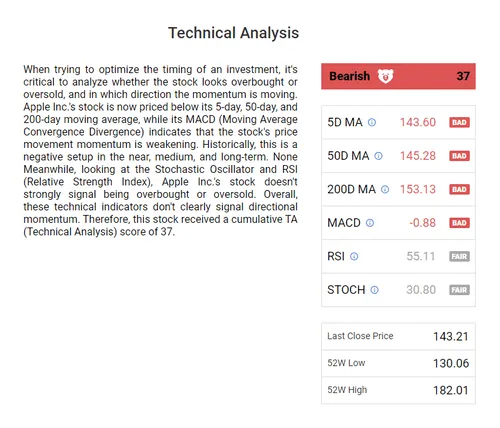20 Good Pieces Of Advice For Picking AI Stock Analysing Sites
20 Good Pieces Of Advice For Picking AI Stock Analysing Sites
Blog Article
Top 10 Tips When Looking At Ai And Machine Learning Models On Ai Trading Platforms For Stocks
To get precise, reliable and useful insights, you need to test the AI models and machine learning (ML). Models that are poorly designed or overhyped can result in faulty forecasts as well as financial loss. Here are 10 of the best tips to help you evaluate the AI/ML models of these platforms.
1. Learn about the purpose of the model and its approach
A clear objective: determine whether the model was designed for short-term trading, long-term investment, sentiment analysis or for risk management.
Algorithm transparency: Check if the platform provides information on the algorithm used (e.g. Regression, Decision Trees, Neural Networks, Reinforcement Learning).
Customizability. Check whether the model can be adapted to be tailored to your trading strategy or level of risk tolerance.
2. Evaluate the Model Performance Metrics
Accuracy - Check the model's prediction accuracy. Don't base your decisions solely on this metric. It can be misleading regarding financial markets.
Precision and recall: Evaluate how well the model can identify true positives (e.g. accurately predicted price changes) and reduces false positives.
Risk-adjusted returns: See if a model's predictions produce profitable trades taking risk into consideration (e.g. Sharpe or Sortino ratio).
3. Make sure you test the model using Backtesting
Performance historical Test the model using historical data to check how it performs in previous market conditions.
Testing on data other than the sample is crucial to prevent overfitting.
Scenario analysis: Test the model's performance under different market conditions (e.g., bear markets, bull markets, high volatility).
4. Be sure to check for any overfitting
Overfitting signs: Look for models that perform extremely good on training data but struggle with data that isn't seen.
Regularization techniques: Determine whether the platform is using techniques like L1/L2 regularization or dropout in order to prevent overfitting.
Cross-validation. The platform must perform cross validation to determine the model's generalizability.
5. Assess Feature Engineering
Relevant features: Verify that the model has meaningful attributes (e.g. price, volume and technical indicators).
Selected features: Select only those features which are statistically significant. Avoid redundant or irrelevant information.
Dynamic feature updates: Determine that the model can be adapted to the latest features or market conditions in the course of time.
6. Evaluate Model Explainability
Interpretability - Make sure that the model provides an explanation (e.g. value of SHAP and the importance of features) for its predictions.
Black-box models: Be wary of applications that utilize extremely complex models (e.g., deep neural networks) without explanation tools.
User-friendly insights : Find out if the platform offers actionable data in a format that traders can be able to comprehend.
7. Reviewing the model Adaptability
Market conditions change - Check that the model is adjusted to the changes in market conditions.
Check to see if your system is updating its model on a regular basis with the latest information. This can improve performance.
Feedback loops. Ensure you incorporate user feedback or actual outcomes into the model to improve it.
8. Examine for Bias and Fairness
Data bias: Make sure the information used to train is accurate to the market and without biases.
Model bias: Find out if you are able to actively detect and reduce biases that are present in the forecasts of the model.
Fairness. Be sure that your model doesn't unfairly favor certain stocks, industries or trading strategies.
9. The Computational Efficiency of a Program
Speed: Find out the speed of your model. to make predictions in real time or with minimal delay particularly when it comes to high-frequency trading.
Scalability: Determine whether the platform has the capacity to handle large datasets with multiple users, without any performance loss.
Resource usage: Check to see if your model has been optimized to use efficient computational resources (e.g. GPU/TPU usage).
Review Transparency, Accountability and Other Questions
Model documentation: Verify that the model platform has comprehensive documentation on the model's architecture, the training process and its limitations.
Third-party Audits: Determine if the model was independently checked or validated by other organizations.
Check that the platform is equipped with mechanisms to detect model errors or failures.
Bonus Tips
User reviews and case studies User feedback and case study to evaluate the actual performance of the model.
Trial time: You may utilize the demo, trial, or a trial for free to test the model's predictions and usability.
Support for customers - Make sure that the platform you choose to use is able to provide a robust support service in order to resolve the model or technical problems.
By following these tips you can evaluate the AI/ML models of stock predictions platforms and ensure that they are precise, transparent, and aligned to your trading objectives. View the top best copyright prediction site tips for more tips including ai for trading, ai for investing, ai investing, best ai stocks to buy, using ai to trade stocks, chart ai for trading, ai trader, ai stock trader, free ai tool for stock market india, chart analysis ai and more.
Top 10 Tips On Assessing The Transparency Of Ai Stock Predicting/Analysing Trading Platforms
Transparency plays an important role when evaluating AI-driven trading as well as platform for stock predictions. It allows users the ability to trust the platform's operations and understand how the decisions were made and to verify their accuracy. Here are 10 best ways to evaluate the transparency of these platforms:
1. A clear explanation of AI Models
Tip Check to see whether the platform provides an explanation of the AI algorithms, models, and platforms used.
The reason: Understanding the basic technology allows users to assess its validity and weaknesses.
2. Disclosure of Data Sources
Tip
What is the benefit of knowing the data sources, you can ensure that the platform has reliable and comprehensive data.
3. Performance Metrics, Backtesting, and Results
TIP: Ensure that there is transparent reporting of performance indicators (e.g., accuracy rates or ROI) and results from backtesting.
Why: Users can verify the effectiveness of an application by examining its previous performance.
4. Updates in Real Time and Notifications
Tip. Determine if your platform is able to provide real-time information and alerts regarding trades or changes in the system, for example trading predictions.
What is the reason: Realtime transparency provides users with constant details about crucial actions.
5. Limitations and Open Communication
Tips Make sure the platform is clear about its risks and limitations in relation to forecasts and trading strategies.
Why: Acknowledging your limitations can build trust with your users and help them make educated decisions.
6. Access for users to raw Data
Tip: Ensure that the users are able to access the raw data that is used in AI models, or the intermediate results.
Why: Users can perform their own analysis using raw data, and then verify their conclusions.
7. Transparency and transparency in fees and costs
Make sure the platform clearly explains the total cost that are due, including subscription fees and also any hidden costs.
Transparent pricing reduces the chance of unexpected costs, and fosters confidence.
8. Reporting Regularly and Audits
Verify whether the platform publishes regular reports, or undergoes audits conducted by third parties to verify the platform's performance.
Independent verification is important because it adds credibility to the process and ensures accountability.
9. The ability to explain predictions
Tips: Check if the platform explains how specific recommendations or predictions are generated (e.g. the importance of features or decision trees).
Explainability is a tool that helps users to understand AI-driven decision-making.
10. Customer Feedback and Support Channels
TIP: Find out if the platform has open channels to receive feedback from its users and provides assistance. Also, you should determine whether the platform addresses concerns of users in a manner that is transparent.
What is the reason: Effective communications show an interest in transparency and user satisfaction.
Bonus Tip: Regulatory Compliance
Assure that the platform is in compliance with all applicable financial regulations. This adds a layer of credibility and transparency.
By assessing these features, you can decide if the AI trading platform and predictions of stocks are reliable. It will then be able to make informed decisions and have confidence in the capabilities of AI. Take a look at the best website on investment ai for blog advice including ai trading bot, best ai copyright, best ai for trading, best ai trading platform, ai copyright trading bot, best stock analysis website, using ai to trade stocks, ai stocks to invest in, ai trading bot, best stock analysis website and more.